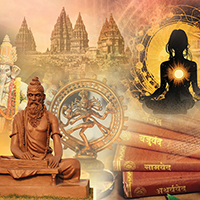Setting the Record Straight: Refuting Udhayanidhi Stalin’s False Claims About Sanatan Dharma
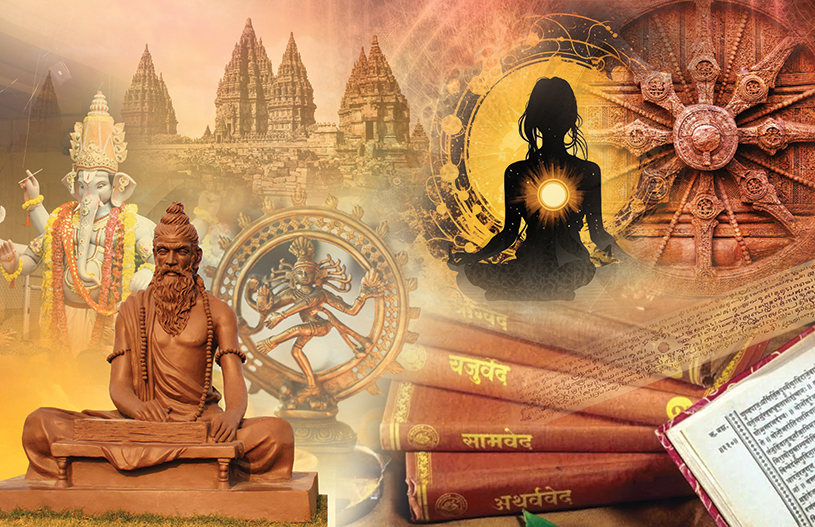
By Dr. Mohini Shinde
Udhayanidhi Stalin, the sports minister of Tamil Nadu made comments about Sanatan Dharma that sparked a wave of controversy. He has accused Sanatan Dharma of being a regressive ideology that divides people on the basis of caste and religion. He has also called for it to be eradicated. He also compared Sanatan Dharma to “malaria” and “dengue,” and said that it should be eradicated. He also argued that Sanatan Dharma is based on the caste system and discrimination.
Let us examine these claims and set the record straight about Sanatan Dharma by refuting Udhayanidhi Stalin’s false statements. We will discuss the history of Sanatan Dharma and explore how it has evolved over the years to become the religion practiced by millions of Hindus all over the world. By the end of this article, readers will have a better understanding of Sanatan Dharma and why Udhayanidhi Stalin’s comments are incorrect and baseless.
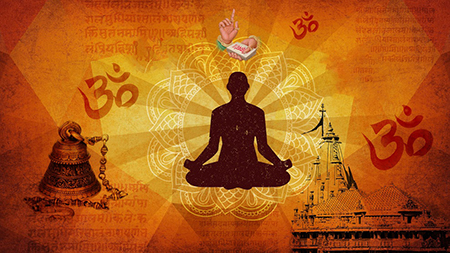 Udhayanidhi Stalin’s Comments on Sanatan Dharma
Udhayanidhi Stalin’s Comments on Sanatan Dharma
Recently, Udhayanidhi Stalin, the sports minister of Tamil Nadu, who calls himself atheist, made very derogatory comments about Sanatan Dharma that have caused quite a stir. In his statements, Stalin portrayed Sanatan Dharma in a negative light and made sweeping generalizations about its practices and beliefs. However, it is clear that Stalin’s comments are misinformed and lack a proper understanding of this ancient religion.
Firstly, it is important to note that Sanatan Dharma, also known as Hinduism, is one of the oldest religions in the world. It has a rich history and encompasses a wide range of beliefs, practices, and philosophies. It is a diverse and inclusive religion that emphasizes personal growth, spirituality, and the pursuit of truth.
Stalin’s comments seem to misinterpret various Hindu practices and traditions. He seems to view them through a narrow lens, without taking into account their historical and cultural significance. It is crucial to understand that Hindu practices are deeply rooted in symbolism and metaphor, and cannot be reduced to simplistic or literal interpretations.
Furthermore, Stalin’s false claims about Sanatan Dharma only serve to perpetuate misunderstandings and stereotypes about Hinduism. It is essential for public figures like him to engage in fact-checking and gain a comprehensive understanding of a religion before making public statements.
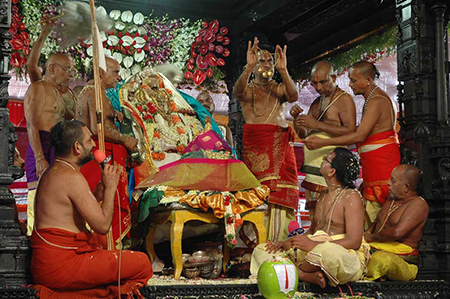 What is Sanatan Dharma?
What is Sanatan Dharma?
Sanatan Dharma is a Sanskrit term that is often translated as “eternal religion” or “eternal law.” It is a broad term that encompasses a wide range of Hindu beliefs and practices, but it is also used by some to refer to Hinduism as a whole.
Sanatan Dharma, also known as Hinduism, is an ancient religion that originated in the Indian subcontinent. It is a complex and diverse religion that encompasses a wide range of beliefs, practices, and philosophies. Sanatan Dharma is not just a religion, but a way of life for millions of Hindus around the world.
At its core, Sanatan Dharma emphasizes the pursuit of truth, self-realization, and spiritual growth. It is a religion that recognizes the interconnectedness of all beings and teaches the importance of living in harmony with nature and the universe. Sanatan Dharma is characterized by its rich mythology, sacred scriptures such as the Vedas and Upanishads, and a plethora of rituals and festivals that celebrate various deities and their divine manifestations.
One of the key principles of Sanatan Dharma is the concept of dharma, which can be understood as one’s moral and ethical duty. It is believed that by following one’s dharma and living a righteous life, individuals can attain spiritual liberation and ultimately merge with the divine.
Sanatan Dharma is a religion that has evolved over thousands of years, absorbing influences from various cultures and civilizations. It is a religion that is adaptable and inclusive, accommodating a wide range of beliefs and practices. Despite its diversity, Sanatan Dharma is united by its underlying principles of tolerance, acceptance, and the belief in the ultimate divinity of all beings.
In this article, we will delve deeper into the misinterpretation of Hindu practices by Udhayanidhi Stalin and address the false claims he has made about Sanatan Dharma. It is crucial to shed light on the true essence of this ancient religion and debunk the misconceptions propagated by uninformed individuals.
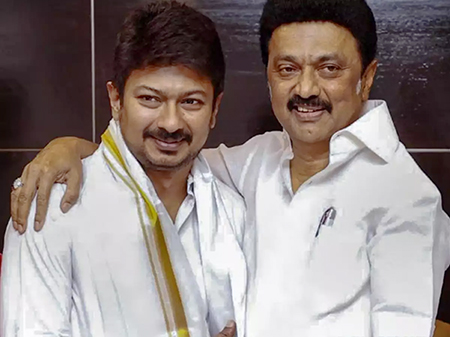 Comments completely baseless and wrong
Comments completely baseless and wrong
The comments made by Udhayanidhi Stalin on Sanatan Dharma are completely baseless and wrong. These claims are not supported by facts. Sanatan Dharma is a diverse and pluralistic tradition that has embraced a wide range of beliefs and practices over the centuries. It has also been a source of great spiritual and cultural inspiration for millions of people around the world.
Stalin’s comments are also deeply offensive to Hindus. Sanatan Dharma is the oldest living religion in the world and is held sacred by millions of people. To accuse it of being regressive and divisive is simply not true.
It is important to note that Stalin’s comments have been widely condemned by Hindus and non-Hindus alike. Many people have pointed out that his comments are harmful and could lead to increased religious polarization in India.
Misinterpretation of Hindu Practices by Udhayanidhi Stalin
Udhayanidhi Stalin’s comments about Sanatan Dharma not only display a lack of knowledge but also a clear misinterpretation of Hindu practices. It is essential to address these misconceptions and shed light on the true nature of these ancient traditions.
One of the main misinterpretations made by Stalin is the reduction of Hindu practices to simplistic or literal interpretations. Hinduism is a religion deeply rooted in symbolism and metaphor. Its rituals, ceremonies, and customs are designed to convey profound philosophical and spiritual concepts. For example, the idol worship in Hindu temples is not the worship of the physical idol itself, but rather the recognition of the divine presence it represents. It is a way to connect with the divine through tangible forms.
Furthermore, Stalin’s comments seem to ignore the historical and cultural significance of Hindu practices. Hinduism is an ancient religion that has evolved over thousands of years, absorbing influences from various cultures and civilizations. It is a complex and diverse religion, with numerous sects, traditions, and philosophical schools. By overlooking this diversity, Stalin fails to recognize the richness and depth of Hinduism.
It is important to understand that Hindu practices cannot be dismissed or misunderstood based on superficial observations. They require a comprehensive understanding of the underlying philosophy and symbolism. By misinterpreting these practices, Stalin perpetuates stereotypes and perpetuates misunderstandings about Hinduism. It is crucial for public figures like him to engage in fact-checking and gain a more nuanced understanding of a religion before making public statements. Only then can we have a more informed and respectful discussion about Sanatan Dharma.
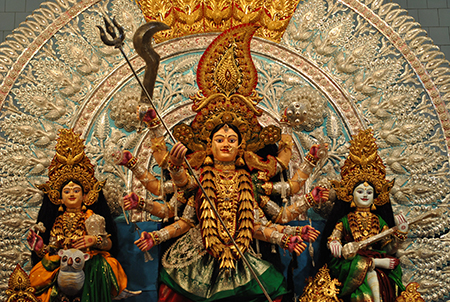 False Claims Made by Udhayanidhi Stalin
False Claims Made by Udhayanidhi Stalin
Udhayanidhi Stalin’s comments on Sanatan Dharma are not only misinformed but also perpetuate false claims about this ancient religion. Stalin seems to have a limited understanding of Hindu practices and traditions, which has led him to make inaccurate statements. One of his false claims is the portrayal of idol worship in Hindu temples as the worship of physical idols themselves. In reality, idol worship in Hinduism is symbolic and represents the divine presence it represents. It is a way for devotees to connect with the divine through tangible forms.
Additionally, Stalin’s comments overlook the historical and cultural significance of Hindu practices. Hinduism is a religion that has evolved over thousands of years, absorbing influences from various cultures and civilizations. It is a complex and diverse religion with numerous sects, traditions, and philosophical schools. By disregarding this diversity, Stalin fails to recognize the depth and richness of Hinduism.
It is important to address these false claims made by public figures like Udhayanidhi Stalin because they contribute to misunderstandings and perpetuate stereotypes about Sanatan Dharma. Before making public statements, it is crucial for individuals to engage in fact-checking and gain a more nuanced understanding of a religion. Only then can we have informed and respectful discussions about Sanatan Dharma, setting the record straight and dispelling misconceptions.
Importance of Fact-Checking Before Making Public Statements
In today’s digital age, public figures and leaders have a significant influence on shaping public opinion. With the power of social media and the speed at which information travels, it is more important than ever for individuals in positions of authority to fact-check before making public statements. This holds true for all topics, including religion.
The importance of fact-checking cannot be overstated, especially when it comes to sensitive topics like Sanatan Dharma. Making false claims or spreading misinformation about a religion can have serious consequences. It can perpetuate stereotypes, fuel religious tensions, and create division among communities.
When public figures like Udhayanidhi Stalin make uninformed comments about Sanatan Dharma, they not only display their lack of knowledge but also risk misleading others. It is crucial for leaders to take the time to educate themselves about different religions and belief systems before making any public statements. This means engaging in thorough research, consulting with experts, and seeking a diverse range of perspectives.
Fact-checking is not just a responsibility; it is a moral duty. It is essential for public figures to prioritize accuracy and ensure that their statements are based on truth and evidence. By doing so, they can contribute to a more informed and respectful discussion, foster religious harmony, and promote understanding among communities. In this age of misinformation, fact-checking has become an invaluable tool in upholding the truth and setting the record straight.
The Congress Party’s silence
The Congress Party’s silence on the recent comments made by Udhayanidhi Stalin on Sanatan Dharma is indeed very bad for maintaining world peace and harmony`. Stalin’s comments were highly offensive and divisive, and they have the potential to incite violence and hatred against Hindus.
The Congress Party is one of the oldest political parties in India.. By remaining silent on Stalin’s comments, the Congress Party is not only sending a wrong message to its own supporters, but it is also undermining its own credibility as a champion of peace and harmony.
The world is already facing a number of challenges, including the ongoing war in Ukraine, the climate crisis, and the COVID-19 pandemic. The last thing we need is more division and hatred. The Congress Party has a responsibility to speak out against all forms of intolerance and bigotry, including Stalin’s comments on Sanatan Dharma.
By remaining silent, the Congress Party is also failing to stand up for the millions of Hindus around the world who are facing persecution and discrimination. Hindus are often the targets of violence and hate crimes, simply because of their religious beliefs. The Congress Party has a moral obligation to speak out against these atrocities and to defend the rights of all Hindus.
The world needs peace now more than ever before. The Congress Party can play a vital role in promoting tolerance and understanding between people of different faiths. By speaking out against Stalin’s comments and other forms of intolerance, the Congress Party can help to create a more peaceful and harmonious world.
It has a long history of promoting tolerance and pluralism
About the Author
Dr. Mohini Shinde is a professor of religions of India and has taught Hindu religion and world religion in several US universities before her retirement. Her research was on religion and politics in South Asia. In her research engagements, she lived several years in India where she studied vedas and upanishads. She lives in California with her husband.

